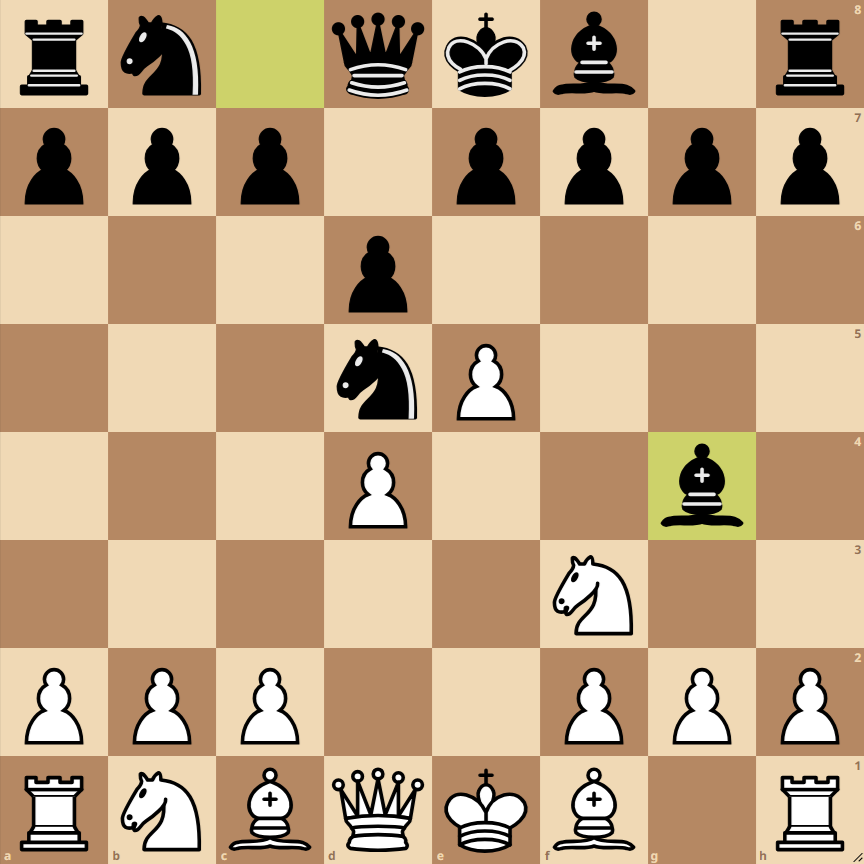How to Play the Alekhine Defense Modern Variation Main Line
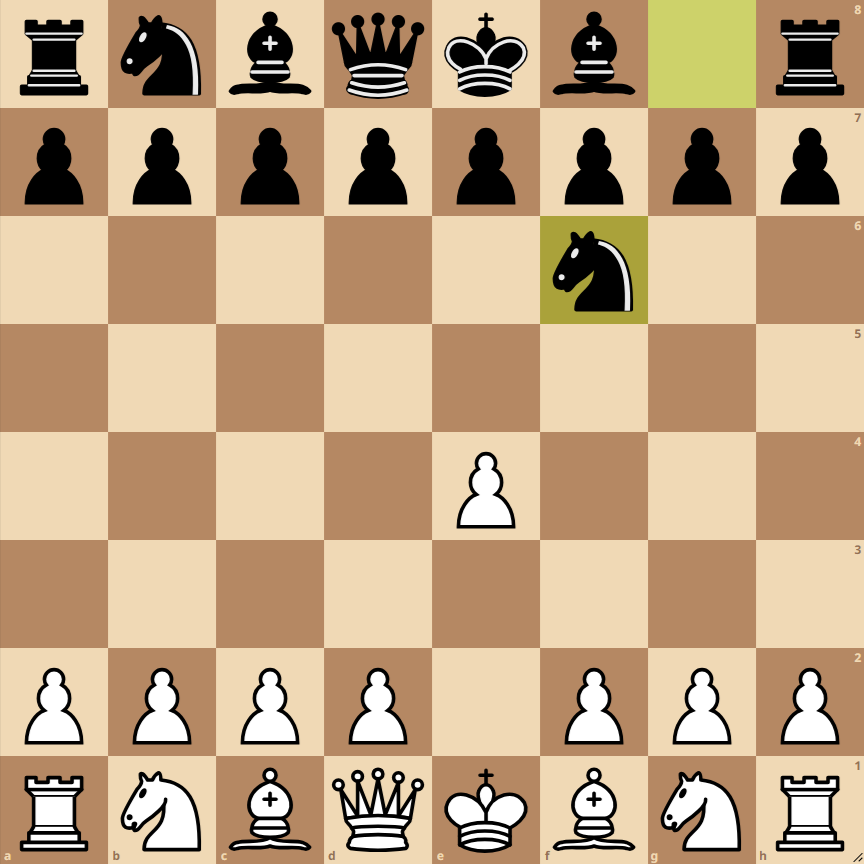
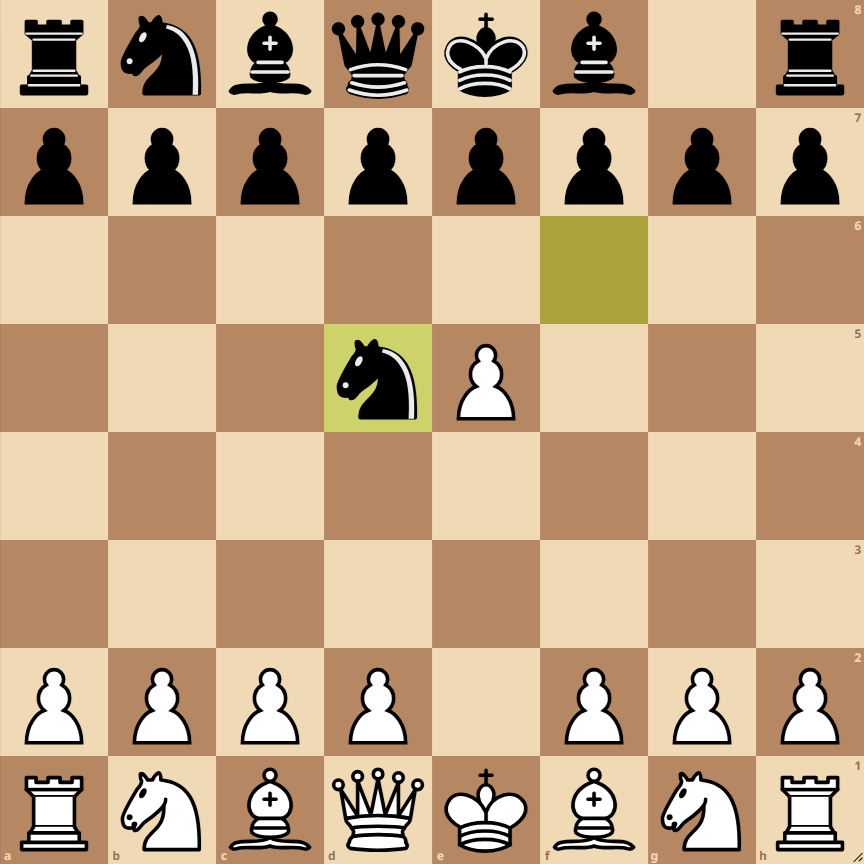
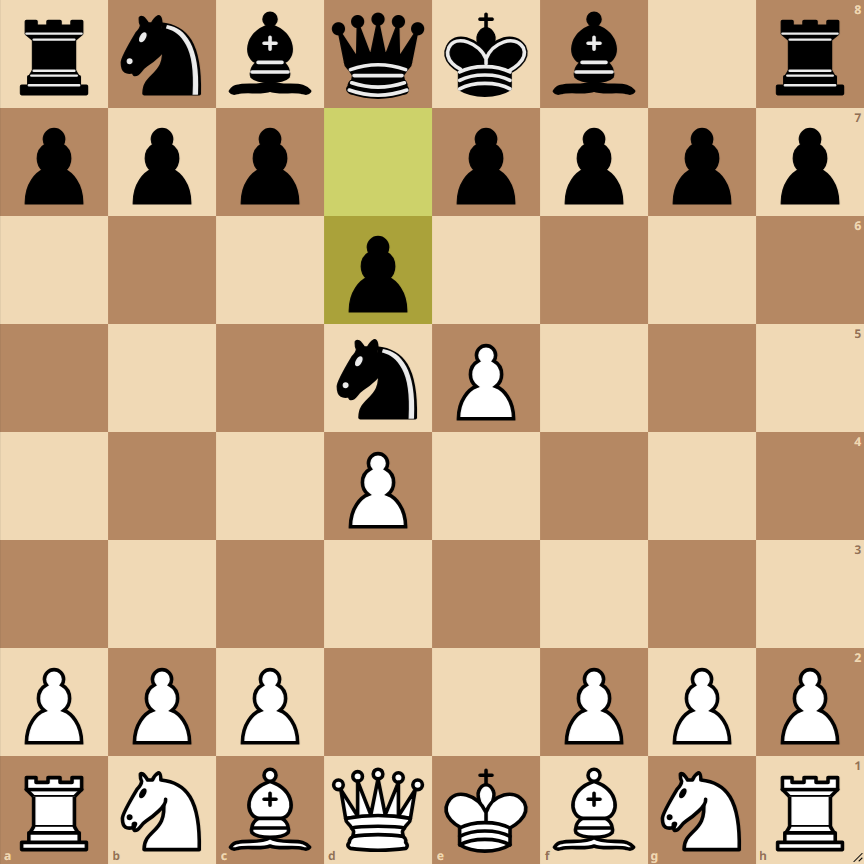
- 1. e4: This is a very common opening move that controls the center and prepares for the development of the bishop and queen.
- 1… Nf6: Black challenges the e4 pawn and begins to control the center. This is the start of the Alekhine Defense, where black provokes white’s pawns to create structural weaknesses.
- 2. e5: White advances the pawn to gain space and attack the knight on f6.
- 2… Nc5: The knight retreats to a safe square, maintaining pressure in the center.
- 3. d4: White reinforces their center and prepares for the development of minor pieces.
- 3… d6: Black begins to undermine white’s pawn center, preparing for possible counterattacks.
- 4. Nf3: Development of the knight, defending the d4 pawn and putting pressure on the center.
- 4… Bg4: Black develops their bishop, attacking the knight on f3 and preparing for possible castling.
Variations of the Alekhine Defense Modern Variation Main Line
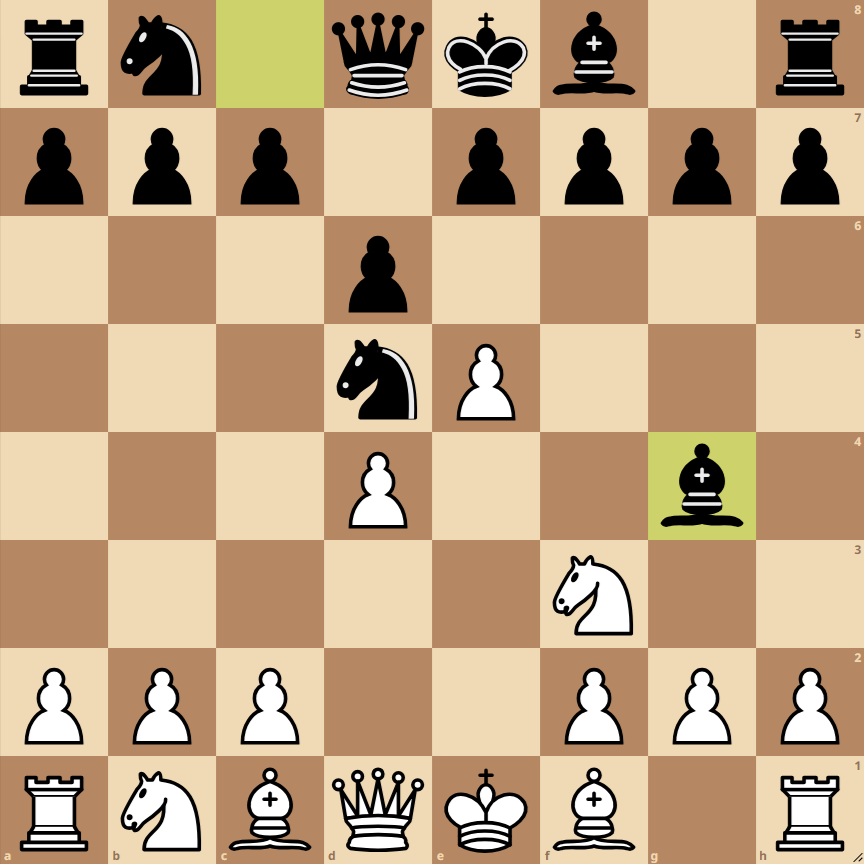
Four Pawns Attack Variation
In this variation, white plays aggressively with 5. c4, followed by 6. Nc3, building a strong pawn center. It’s an ambitious line but comes with risks of overextension.
Exchange Variation
This variation is characterized by the early exchange on d6 with 4. exd6. White aims for a more simplified and structural game, while black focuses on rapid development and pressure in the center.
Modern Variation
In the Modern Variation, white plays 4. Nc3, developing another piece while maintaining tension in the center. This line leads to more dynamic positions rich in tactics.

